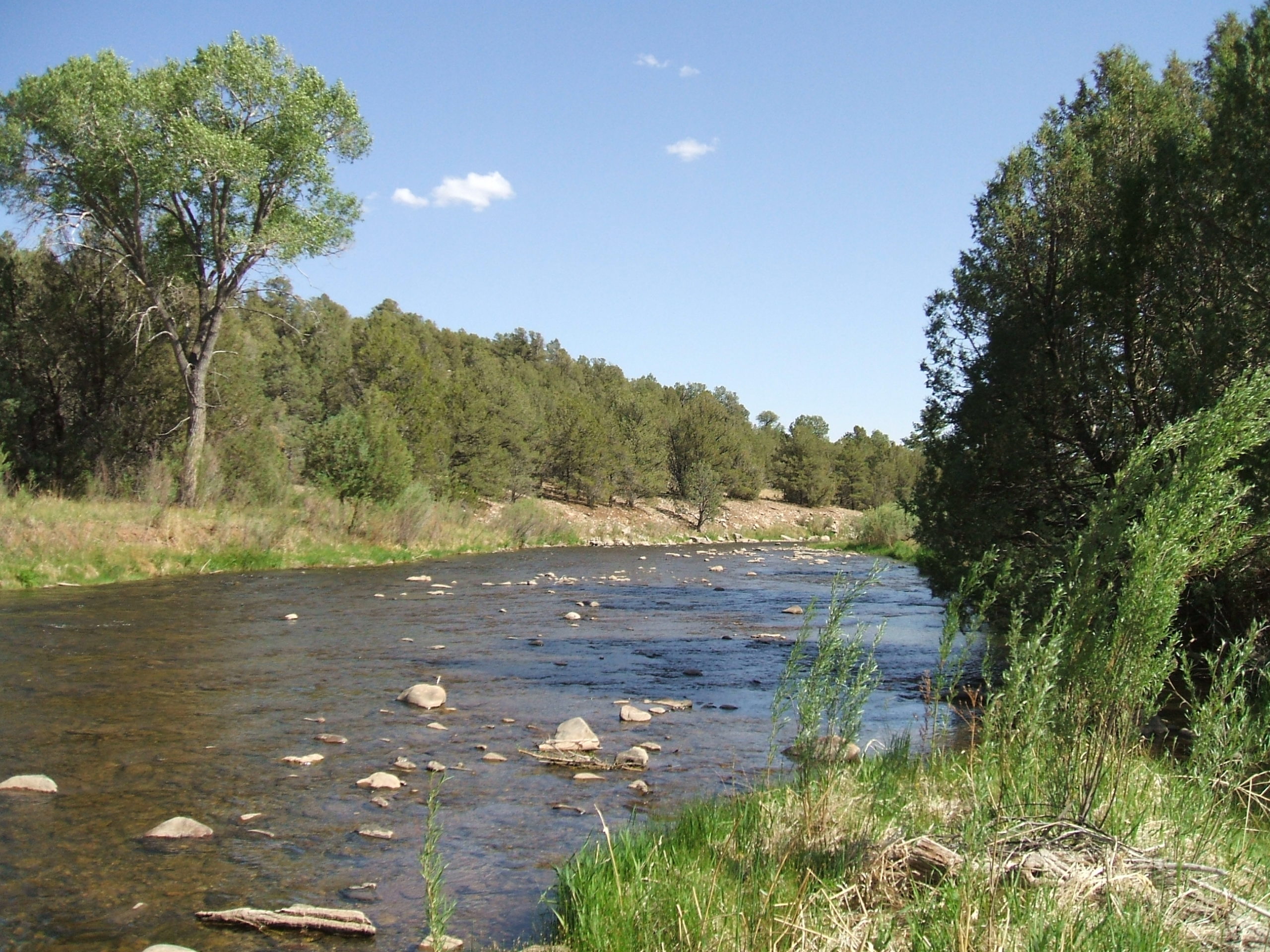For thousands of years, the Upper Pecos River watershed in Northern New Mexico has been home to the people of the Pecos/Jemez Pueblo. The entire watershed continues to be their ancestral homeland, used for age-old spiritual practices, hunting, fishing and herb gathering. When Spaniards arrived in the area more than 400 years ago, they too relied upon those waters to grow food and raise livestock. Over the past several decades, those traditional values have been joined by recreational enthusiasts, who ply the waters of the Pecos in search of brown, rainbow and native Rio Grande cutthroat trout or simply to find peace and solace in the tranquil New Mexico landscape.
A desire to protect the waters of the Pecos from any future threats of toxic pollution or degradation has galvanized a diverse coalition of residents, business owners, guides & outfitters, sportsmen, local governments, farmers, ranchers, and conservationists to protect their sacred lands and waters. In April, the group formally asked the State of New Mexico to designate more than 200 miles of the Pecos River and related tributaries, wetlands, and other waterways, as Outstanding National Resource Waters (Outstanding Waters).
In the coalition’s announcement, Ralph Vigil, an eighth-generation acequia user and local organic farmer, said, “It is through the preservation of this precious resource that our ancestors have maintained their will to survive, and it is through [Outstanding Waters] protections that they will continue to sustain future generations for centuries to come.”
Ralph and the coalition demonstrate how actions today must be shaped by our future needs.
When millions of people are sheltering in place, thoughts of cool rushing waters, meals shared on the banks of a favorite river or lake, and the sound of birds chattering in the distance, fill many with a sense of comfort, as well as longing. This heightened appreciation for the outdoors underscores two simple facts: we are a part of nature, and nature’s well-being is tied to ours.
As with many other inequities, our present circumstances have also prompted renewed attention to the racial disparities in access to green space. According to The Trust for Public Land, more than 100 million US residents, including 28 million children, do not have a park within a 10-minute walk from their home.
Often, the most desirable places to live and play are those along coastlines, rivers, creeks, ponds, and marshes. A recent survey of US voters by APM Research and The Water Main found that about 50% of US residents feel a personal connection with a specific lake, river, or ocean, and about 62% spend free time in or around bodies of water at least once a month during warm times of the year.
In the absence of good planning, protective rules, and science to guide us, we have seen how people’s destruction of nature can lead to worsening floods, droughts, and even disease outbreaks. But the kind of stewardship that we see in places like the Upper Pecos can sustain clean air, clean water, good soil, and fundamental ecological processes for hundreds or thousands of years.
When done well, that stewardship embraces the ways in which people and nature can function and thrive together.
That same thinking informed the passage of the Clean Water Act in 1972, including the provision that empowers states to designate Outstanding Waters to protect water bodies and the cultural, economic, recreational, and spiritual values they provide to local communities. Outstanding Waters designations specifically protect existing activities taking place in the watershed, such as ranching, farming, or recreation, while preventing any new activities that would harm long-term water quality. The designation acts like legal bubble wrap around rivers and streams, holding in place communities’ preexisting land and water uses.
In the 48 years since the Clean Water Act was passed, states such as Arizona, New Mexico, New Jersey, and Tennessee have created their own Outstanding Waters programs to protect and restore some of the United States’ most pristine and healthy waters, while preserving activities that have long helped a community create jobs, retain traditions, and spend time together.
Rivers, lakes, and streams are places of connection. In places like New Mexico, they are the very foundation of the state’s irreplaceable cultural identity. As the primary source of US drinking water, they unite millions of people, without concern for mountain ranges or state lines. When we are at our most fragile, water can buoy us. When we are feeling good, it sparkles with us.
From Washington and Oregon to New Mexico and Colorado, people are using the Outstanding Waters designation to preserve and strengthen their communities. As more states consider how they can develop and advance Outstanding Waters programs, we invite them to learn more about the coalition for the Upper Pecos. To get started, check out a video by residents, ranchers, and farmers sharing why they have come together to protect New Mexico’s waters for future generations.
